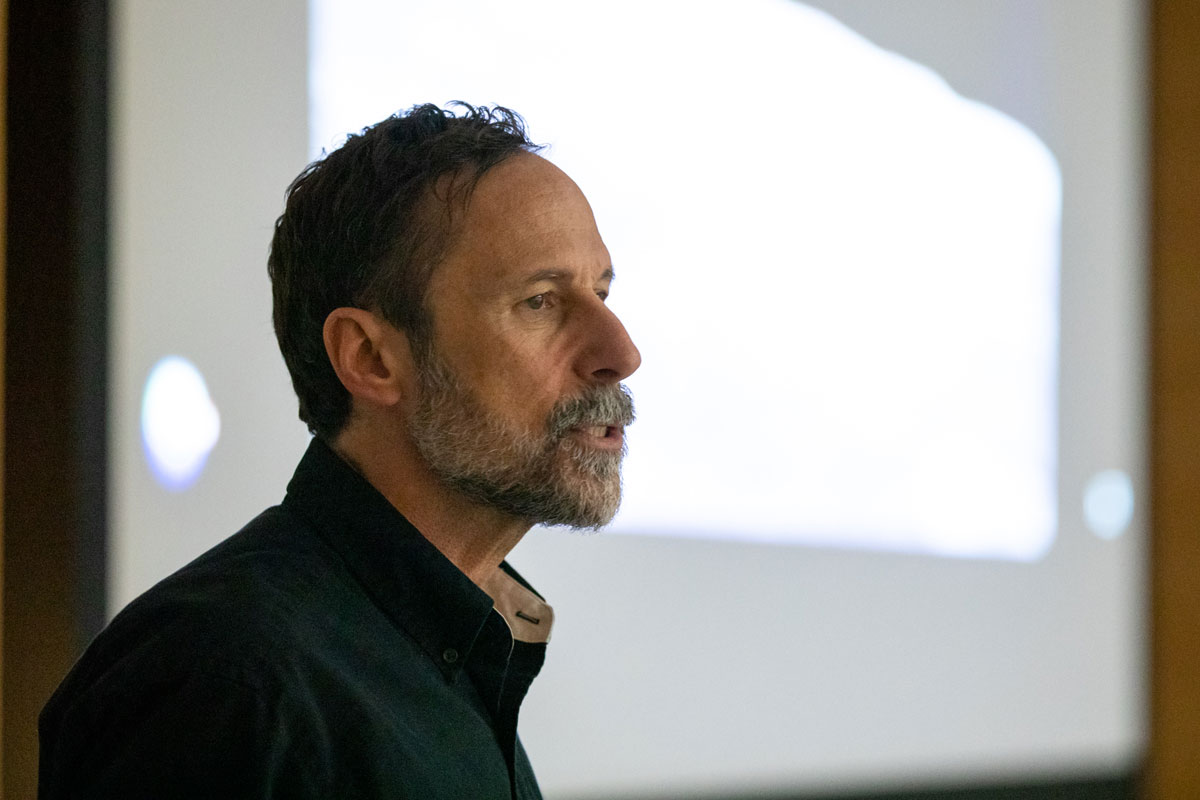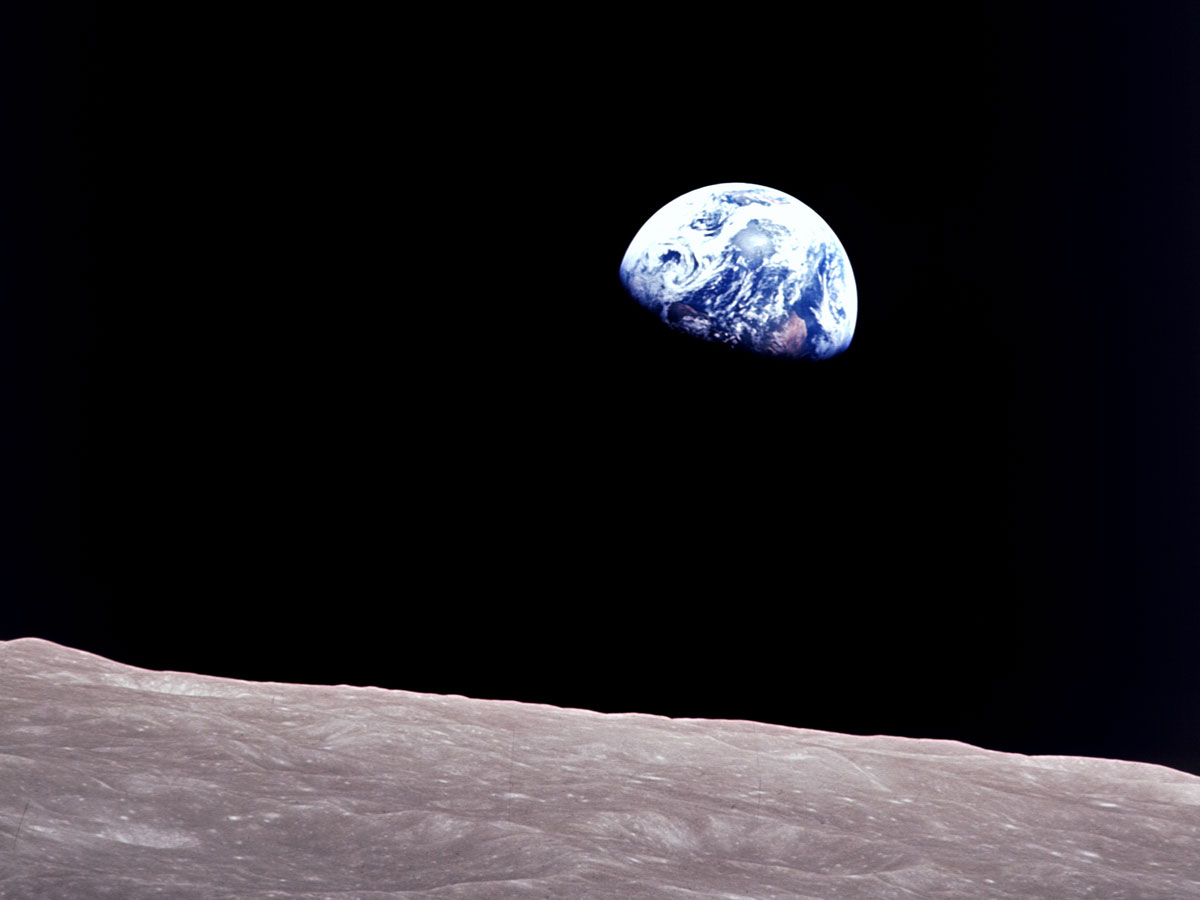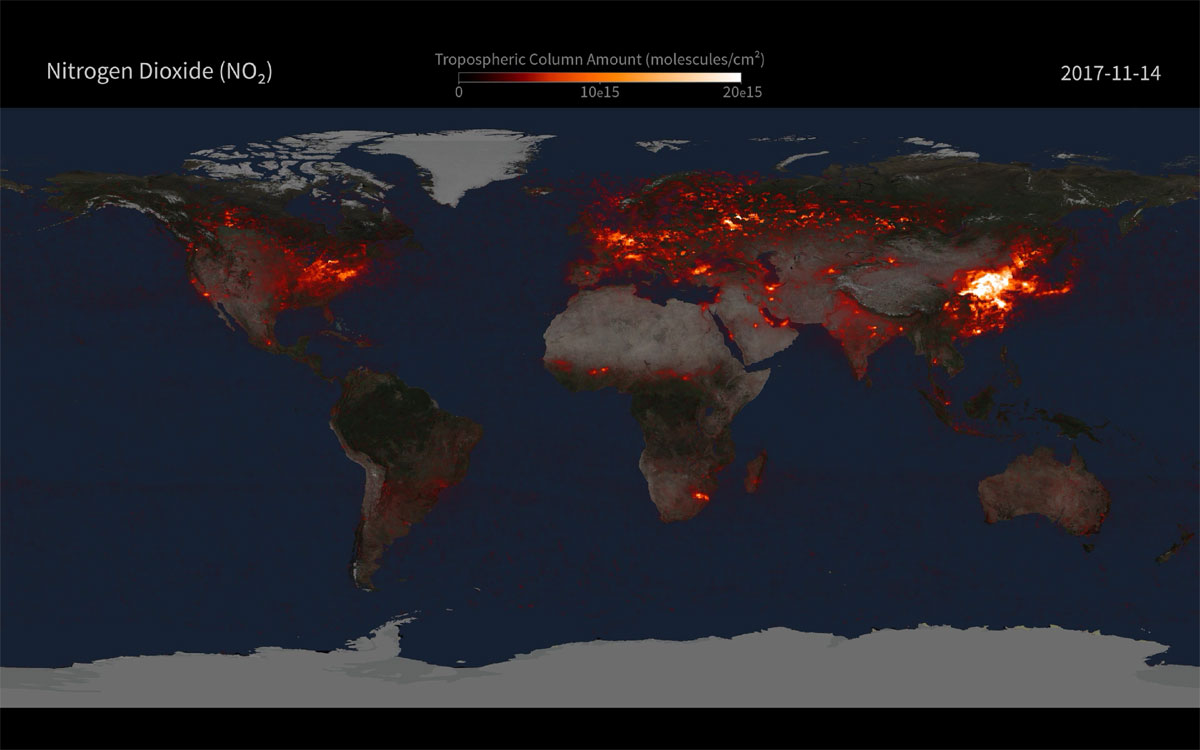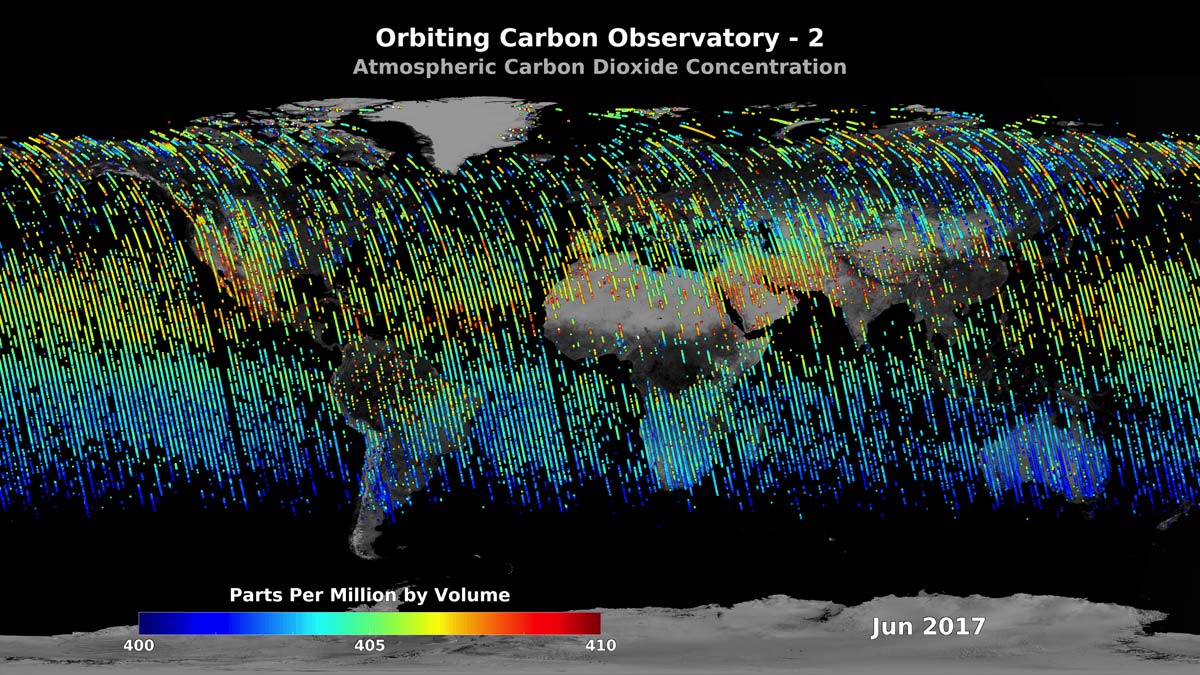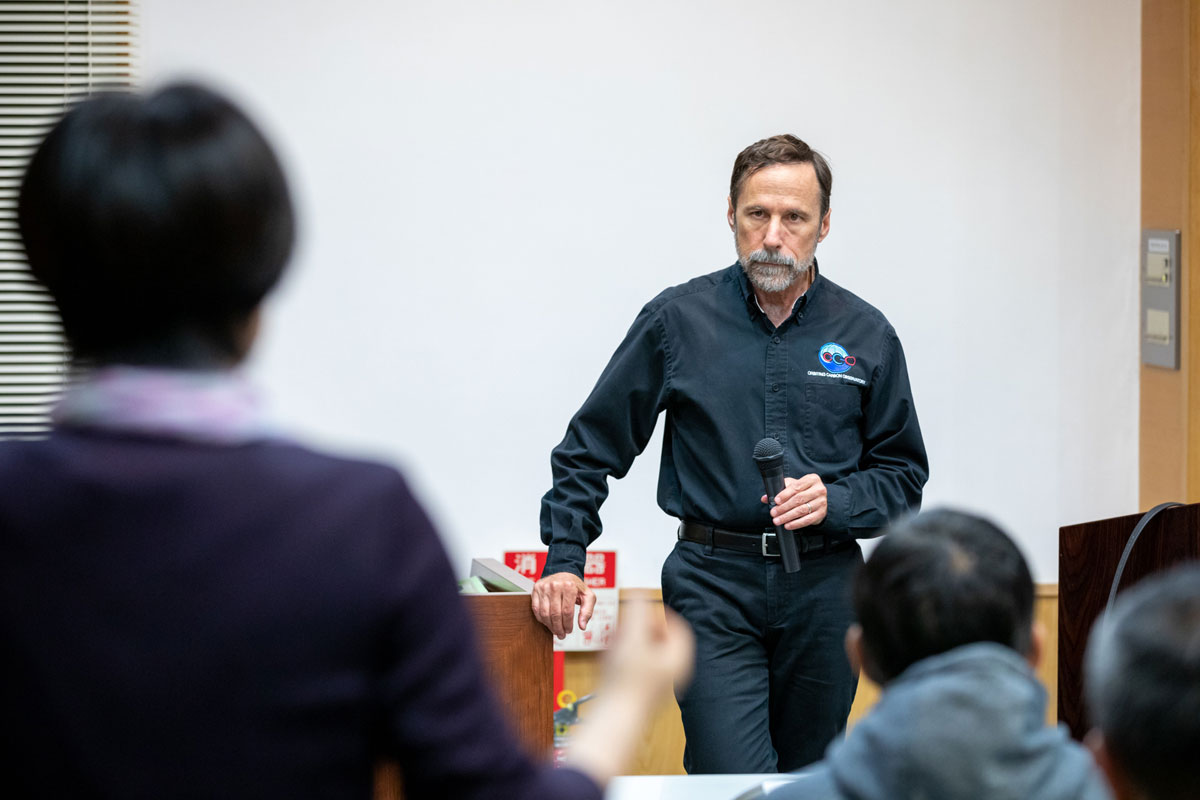2020年2月号 [Vol.30 No.11] 通巻第350号 202002_350004-en
Monitoring the Earth’s Evolving Climate from Space
Dr. David Crisp
Dr. David Crisp is an atmospheric physicist at the NASA Jet Propulsion Laboratory (JPL), California Institute of Technology. Since receiving his Ph.D. from the Geophysical Fluid Dynamics Program at Princeton University in 1984, his research has focused primarily on the development of instruments and numerical models for analyzing light reflected, emitted, and scattered by atmospheres and surfaces of the Earth and other planets. He has served on the science teams of several missions including the Soviet/French/US VEGA Balloon mission, NASA’s Hubble Space Telescope Wide Field/Planetary Camera-2, and Mars Pathfinder mission, and the European Space Agency (ESA) Venus Express mission. He was the Principal Investigator of the NASA Orbiting Carbon Observatory (OCO) and is currently serving as the Science Team Leader for NASA’s OCO-2 and OCO-3 missions. He is a member of the Science Team for the Earth Ventures Geostationary Carbon Cycle Observatory (GeoCarb), a member of the European Copernicus CO2 Mission Advisory Group and the Greenhouse Gas Lead for the Committee on Earth Observation Satellites (CEOS) Atmospheric Composition - Virtual Constellation (AC-VC).
(https://science.jpl.nasa.gov/people/DCrisp/)
I would like to shortly tell you about my career path, which provides some suggestion that there is life and hope after PhD. In my career I had an opportunity to work on a number of things. I have been in this career a long time, 35 years. For each of those 35 years I had to find money for my salary, plus an equivalent amount for overhead, just to stay afloat. This has advantages and disadvantages. I always tell my students that the most important thing that you get out of a PhD, is “the right to write your own ticket”. You can do anything, and you can convince somebody else to give you money for. And that leads to an interesting career sometimes. There are fascinating opportunities around the world that you can exploit. I had some opportunities to do things that were fun, interesting, and important.
When I first worked as a post-doc, I got to fly two weather balloons into the atmosphere of Venus with Soviet and French scientists. These weather balloons measured pressure, temperature, and cloud thickness as they bounced around in the atmosphere and we tracked them with a new technology called Very Long Baseline Interferometry, or VLBI, that we had just developed and got the wind speeds and directions very accurately. That was fun. But then, my post-doc tenure came to an end. I had worked on this big Soviet-USA-French project, where I was the 18th author on every paper. I tried to get a job after my post-doc, but I couldn’t find any. They said: “You have no first-authored papers”. Meanwhile, the guy down the hall in that building was interested in giving me a job for building an updated version of the Wide Field / Planetary Camera (WF/PC) on the Hubble space telescope, and he desperately needed somebody who could put some computers together and do transfer calculations. I was an expert in radiative transfer, the transfer of light to atmospheres. He said “You need a job? I need a science team member. How would you like to be number one in that team? I need you to do the photometry for the WFCP2”. So, I took the job.
A couple of years later I was working with a graduate student on retrieving surface and atmospheric temperatures on Mars using remote-sensing data. I was frustrated because I found that near the surface of the planet, I couldn’t learn anything. The surface dominated the signal. So, I walked into my director’s office one day and I said: “If you want to know the near-surface environment on Mars which will be the working environment for future, by rovers and landers, we’ve got to go there and measure it by in situ sensors.” And he said: “You’ll have to do that. Get a proposal on my desk by this afternoon”. And I did, and I started building Mars’ weather stations. As the 90s progressed, and I was continuing the study of Venus, the love of my life, I started to look at near-infrared light emitted on the night side of the planet, and found that light comes all the way from the surface. By measuring this light with spectrometers, we could measure the composition of the atmosphere below the clouds. We were focusing on near infrared light, using brand new imaging spectrometers. But while I was studying carbon dioxide (CO2) and radiative transfer and greenhouse effects on Venus, I became very concerned about another planet. Not Mars, not Venus, but the Earth. I was beginning to wonder, is there a way to make measurements of the atmosphere of this planet, not just how much carbon dioxide there is in the atmosphere, but where it is coming from and where it is going to?
As you can see, there are very interesting projects that you can work on. Was any of that planned? Did I end up going down a path that I had planned out? No. It was a different path than I ever would have imagined. It was more interesting and more difficult than any path that I had imagined when I was a graduate student. Today, let’s look at some of where that path has brought me, and what wakes me up every morning and keeps me going.
On December 24, 1968, as Apollo 8 circled the moon for the first time in human history, one of the astronauts, Bill Anders, picked up a camera and photographed the Earth, rising above the horizon of the moon. When this picture was returned to Earth, it had a profound effect on us. We realized that every human being who ever lived was in that picture except for the 3 astronauts on Apollo 8! The small disk of the Earth against the vacuum of space also helped us to realize that we are all in this together, like in a life boat. This picture also had a profound impact on NASA. They realized the Earth was a planet, and that they actually studied planets, so they should study the Earth. Since then, NASA has been studying Earth more aggressively and more actively, and it continues to lead the world in space-based observations with a network of satellites. NASA currently has a fleet of over 20 satellites that observe the Earth. Some are making unique measurements of critical climate variables while others are flying in formation to gather measurements for detailed investigation of the Earth system, such as the thickness of land and sea ice, and land and atmospheric carbon cycle.
Scientists monitor land-surface temperature because the warmth rising off Earth’s landscapes influences our world’s weather and climate patterns. NASA satellites monitor the ice sheet that covers the Arctic Ocean, and its variations over time. Scientists gather data on sea surface height from satellite radar altimeters to detect patterns and monitor changes in ocean height. NASA and its partners also measure rainfall, to track severe weather, like hurricanes and typhoons. By monitoring the color of reflected light via satellite, scientists can also determine how successfully plant life is photosynthesizing. They can also identify regional trends of freshwater movement using GRACE data combined with data from other satellites, climate models and precipitation measurements.
The stratospheric ozone layer has been monitored by NASA satellites since the 1970s. These satellites showed a massive decrease in the stratospheric ozone concentrations over Antarctica, commonly called the ozone hole. Once the cause of the ozone hole was discovered, the countries of the world came together and outlawed the production of the CFCs that were doing the most damage to the ozone layer. Since 1988, when the Montreal Protocol was signed, the loss of ozone over Antarctica has been slowly decreasing. Also nitrogen dioxide (NO2) is monitored by NASA. It is a source of air pollution that is released into the air from fossil fuel combustion and other human activities. NO2 emissions have decreased substantially over the developed world since 2000 because of regulations of emissions, but they have increased over some parts of the developing world, as these regions have become more industrialized.
OCO-2 (Orbiting Carbon Observatory-2) is the first NASA satellite to measure atmospheric CO2 from space with the precision, accuracy, resolution, and coverage needed to identify the sources that emit CO2 into the atmosphere or the natural sinks that absorb this gas. These measurements clearly show the Earth breathing in during springtime as plants on land absorb CO2 to produce new leaves, stems, and roots, and breathing out in the fall and winter as they go dormant. They also show that the background CO2 concentration is growing by about 0.5% each year, passing the 400 parts per million mark at Mauna Loa for the first time in May of 2013. But to find the sources emitting CO2 into the air, or the natural sinks absorbing this gas from the air, we need far more measurements with unprecedented accuracy and precision. OCO-2 orbits the Earth 14.5 times each day from south to north, collecting about 72,000 measurements, and combining its data with GOSAT observations and with those from the recently launched GOSAT-2 and OCO-3, we can obtain data with super-high resolution and precision. OCO-2 collects precise measurements of CO2 and other greenhouse gases at high spatial resolution over the entire globe. These measurements will play a critical role in future global greenhouse gas monitoring systems designed to track CO2 emissions associated with human activities.
As the carbon cycle science community continues to analyze these OCO-2 data, quantitative estimates of regional-scale emission sources and natural sinks (absorbers) are expected to emerge. OCO-2’s XCO2 measurements are now being assimilated into sophisticated numerical transport models to produce a more complete description of the CO2 distribution and processes controlling its atmospheric concentrations. Some of our colleagues have assimilated the OCO-2 and GOSAT data into a model, trying to look at the sources and sinks. What we actually learned was a surprise to everybody. We could see where the sources were, and whether they were human sources or natural sources. We found that the tropics were a source of CO2 emissions in 2015 and 2016, and attributed this to the strong El Niño. After El Niño, we thought that the tropical emissions would cease, but they continued in 2017, a La Nina year, and throughout 2018 and 2019. Are the tropics now always a source? The tropics used to take up a lot of the CO2, but this effect is now missing. If there is any place that takes up more CO2, it is the oceans and high-latitude forests. So, we realized that satellite observations and ground-based observations do not match. It’s not that ground-based measurements are wrong, there are just not enough of them. And they are not where they need to be. So, there are three possibilities: either the space-based measurements are wrong, the ground-based measurements and models that we have used and believed in for 30 years are misleading, or the third possibility: everything just changed. Is this another impact of climate change? Are we seeing an impact of climate change on the carbon cycle? Does it mean that a lot of places that have been storing carbon are going to start giving it back to us?
Wouldn’t you like to know? I would! This is what gets me up in the morning. If we can get the ground-based measurements where we need them, we can validate the space-based measurements, so I want to work with people who make ground-based measurements and aircraft measurements. We desperately need to work together to solve this problem. Earth science problems are hard, and we need as much brain power as we can gather to solve the problem. If we can enlist the international science community to work on these problems, we will solve the problems faster. I think, international collaboration is an absolutely critical part of this kind of progress. Because in the future, we will not be able to control climate change by controlling human anthropogenic emissions alone. Of course, we must watch these anthropogenic emissions, but we must watch the natural emissions too, because the natural carbon cycle emits and reabsorbs 20 times as much CO2 into the atmosphere every year as all human activities. If that changes just 5 percent, it doubles or halves emissions. This gets me up every morning and gets me excited and makes me work on a problem all the time.
The Earth is changing a lot. The astronauts who saw it in 1968 were looking at a different planet than the one we are living on today. It’s changing so much so fast. If you are trained in Earth science, we need you. We need young researchers to continue this research, to establish ground-based stations, to make more measurements. We have to understand how these things are working and we desperately need all the help we can get.
So, is there a life after graduate school? Yes, there is. But you have to take all the opportunities that arise. For me, it was a strange trip. It never went the way I had expected, it brought me to some places that were far more interesting than I could have imagined, and it brought me to some things that were far worse, and I failed. But I tried again. Life after PhD is not all roses every day of your life, it’s a lot of hard work but the pay-offs are great. And then you can feel at the end of it all, that maybe you’ve done something worthwhile, maybe you have paid your debt for polluting the air and the water, like every one of us does. And maybe by the time I finish my next job, the atmosphere will be clean. Keep Earth alive, so that she keeps us alive!
Thank you for your attention!
* From the lecture “There are hopes, jobs and life after PhD” held on October 18, 2019 at the National Institute for Environmental Studies (NIES). This lecture was jointly organized by NIES and the Japan Society of Atmospheric Chemistry with the purpose of fostering an international perspective and helping young researchers to develop their careers. It was a good opportunity not only for young researchers but also for mid-career researchers to reflect on what they have done so far and rethink their life as a researcher.


